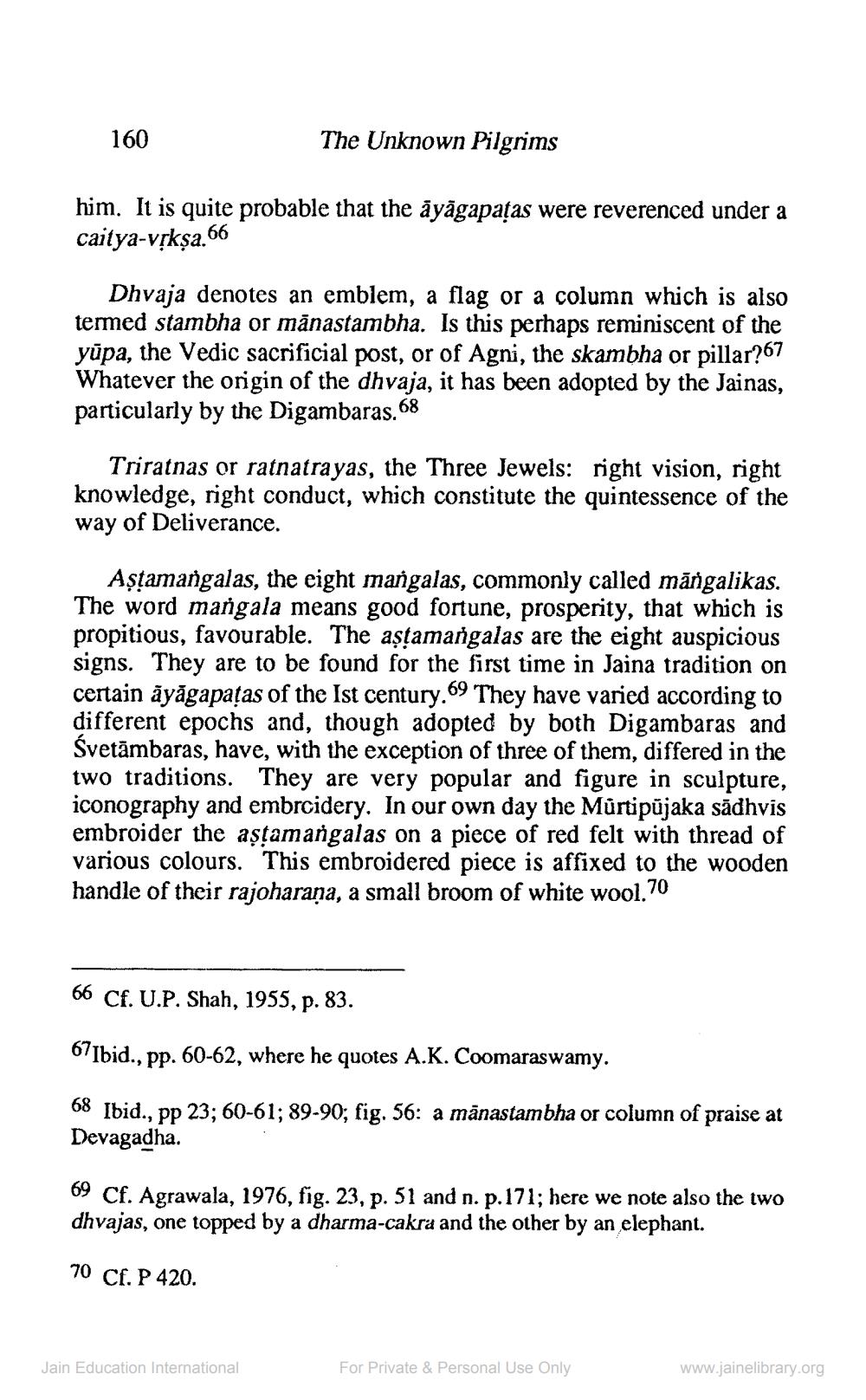________________
160
The Unknown Pilgrims
him. It is quite probable that the āyāgapatas were reverenced under a caitya-vskṣa. 66
Dhvaja denotes an emblem, a flag or a column which is also termed stambha or mānastambha. Is this perhaps reminiscent of the yūpa, the Vedic sacrificial post, or of Agni, the skambha or pillar?67 Whatever the origin of the dhvaja, it has been adopted by the Jainas, particularly by the Digambaras. 68
Triratnas or ratnatrayas, the Three Jewels: right vision, right knowledge, right conduct, which constitute the quintessence of the way of Deliverance.
Aștamangalas, the eight mangalas, commonly called māngalikas. The word mangala means good fortune, prosperity, that which is propitious, favourable. The aştamangalas are the eight auspicious signs. They are to be found for the first time in Jaina tradition on certain ayāgapatas of the Ist century.69 They have varied according to different epochs and, though adopted by both Digambaras and Svetāmbaras, have, with the exception of three of them, differed in the two traditions. They are very popular and figure in sculpture, iconography and embrcidery. In our own day the Murtipūjaka sādhvis embroider the aştamangalas on a piece of red felt with thread of various colours. This embroidered piece is affixed to the wooden handle of their rajoharana, a small broom of white wool.70
66 Cf. U.P. Shah, 1955, p. 83.
67Ibid., pp. 60-62, where he quotes A.K. Coomaraswamy.
68 Ibid., pp 23; 60-61; 89-90; fig. 56: a mānastambha or column of praise at Devagadha.
69 Cf. Agrawala, 1976, fig. 23, p. 51 and n. p.171; here we note also the two dhvajas, one topped by a dharma-cakra and the other by an elephant.
70 Cf. P 420.
Jain Education International
For Private & Personal Use Only
www.jainelibrary.org




